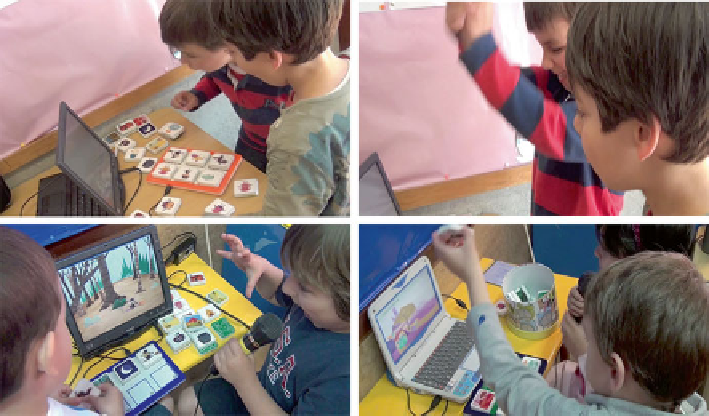Information Technology Reference
In-Depth Information
Fig. 12.11
Children gesturing and standing up, rejoicing and simulating movements of their
characters
12.6
Overall Refl ections on the Design Process
Having the possibility of carrying several design iterations and evaluating their use
for an extended period of time gave the researchers an insight into children's world,
allowing the team to understand some of their needs, preferences, likes and dislikes.
Some ideas and prototypes created along this process slowly evolved into more
developed products that underwent several optimisation cycles. Many of the initial
ideas were left behind and several paths proved unpromising due to various reasons.
However, they were part of the design process and helped to clear ideas towards
what was important and not and which approach worked or not. Some important
design solutions emerged just by chance, as, for instance, the use of a microphone.
The observations from the interventions at preschool strongly support the
Design
Principles for Tools to Support Creative Thinking
(see Sect.
12.2.1
) proposed by
Resnick et al. (
2005
; Resnick and Silverman
2005
). The very simple and intuitive
setup of the interface, as well as its robustness, made it easy for children to start,
supporting different approaches and different levels of interaction, promoting explo-
ration and experimentation while sparking children's creativity.
A certain degree of unpredictability of the stories (which depend from the
sequence of blocks placed on the platform and the order they enter the system),
generated by the integration of a plot- and character-based approach, nurtured chil-
dren's motivation and engagement. They located their stories in different settings
and combined the characters and the objects in numerous ways, always creating
original stories. In fact, children not only created their stories by adding elements to
the platform, they also recurrently applied different creative strategies to achieve a

